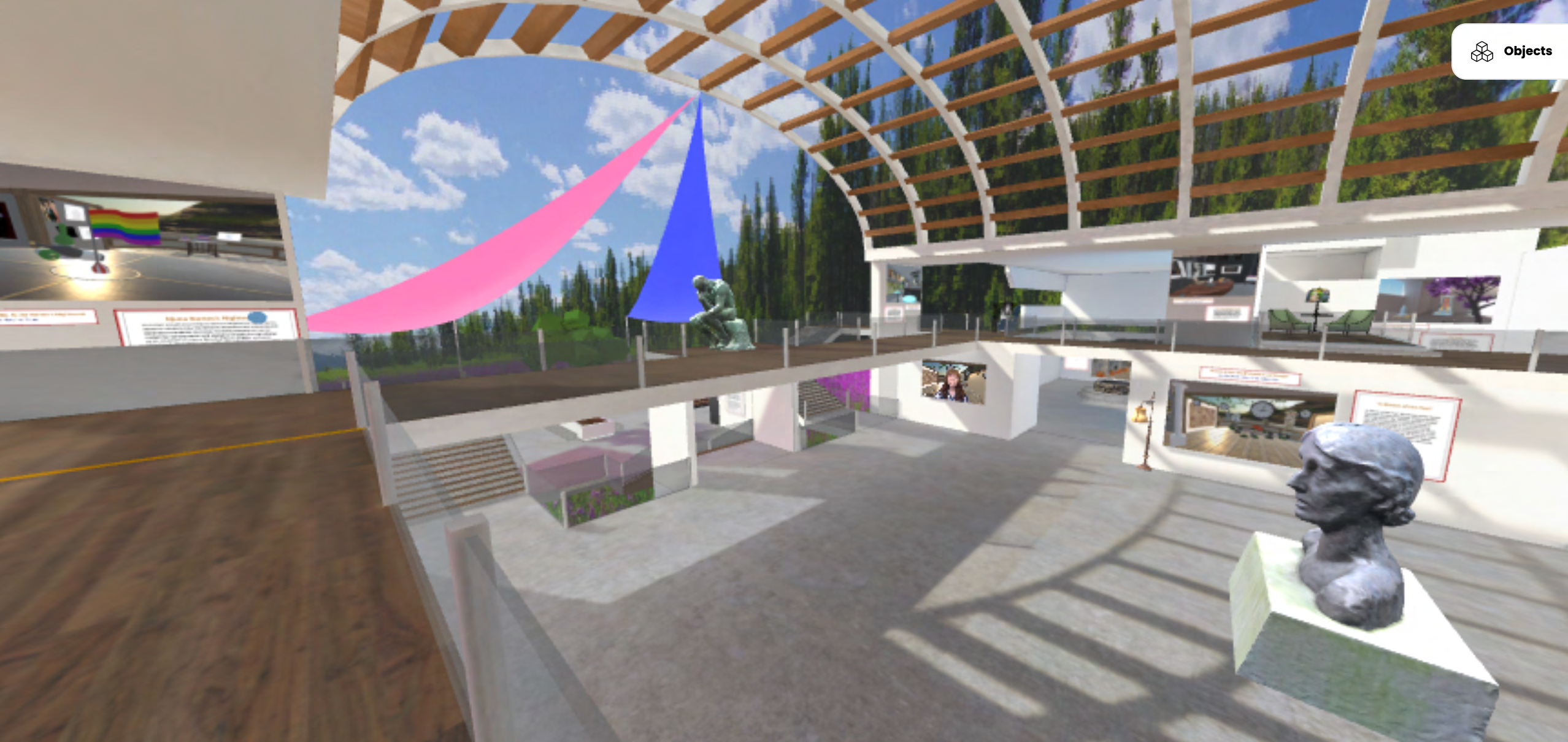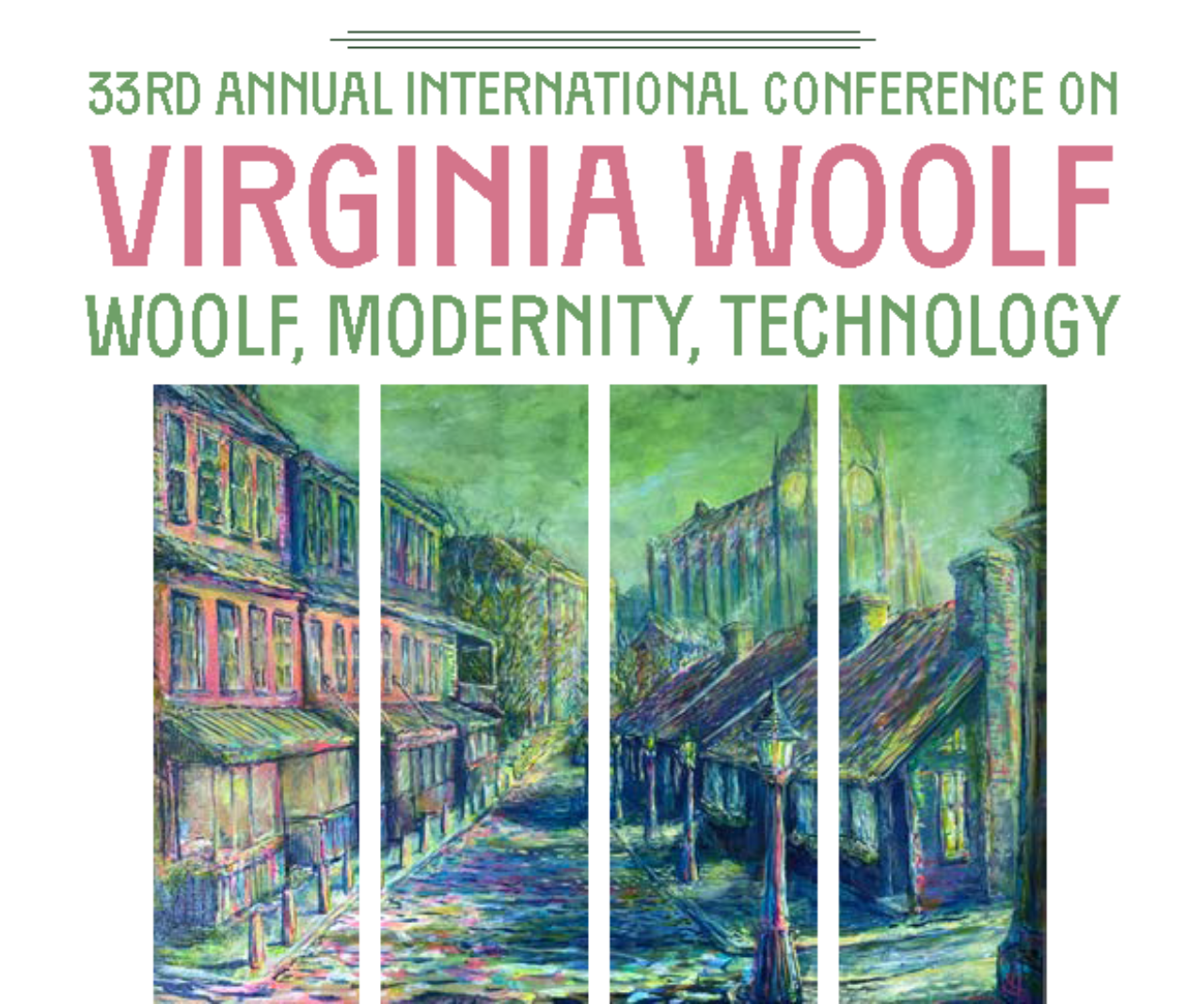
Modernisms–Xtended
A virtual and extended reality digital exhibition
By J. Ashley Foster, students from the Digital Modernisms graduate seminar and Virginia Woolf, Digital Woolf upper-division seminar, and the Hubs for Digital Innovation and Transformation at California State University, Fresno
About the exhibition
Modernisms—Xtended is an extended and virtual reality (XR/VR) digital humanities exhibition designed to expand the circle of modernism. This project comes out of a collaboration between J. Ashley Foster, students of the “Digital Modernisms” graduate seminar, students of the “Virginia Woolf, Digital Woolf” undergraduate upper-division seminar, and the Hubs for Digital Innovation and Transformation at California State University, Fresno. Here, we feature the unheard voices of modernism, include texts that are not typically read as modernist, and juxtapose them with the canonical writings of Virginia Woolf to create virtual galleries that capture and further modernist aesthetics. In doing so, we seek to advance work on intersectional and feminist digital modernisms, practice (+/- the?) historical recuperation of lost voices, read the unsaid of what is not written and the gaps and silences of what is written, and illuminate the ways in which our collection of chosen texts take up the social justice causes of feminism, pacifism, socialism, racial equality, and advocacy for queer communities. We also aim to expand (xtend) modernist discourses to address the racial, gendered, and sexual inequalities in the representation of the field and in the scholarship being created and written, turning an analytic eye not only to the cultural production of the time but the academic production of the present.
Each of the rooms were designed by a pair or triad of young scholars, using a text or set of texts as their central theme. We invite you to tour the multiplicity of spaces using either VR goggles or your usual laptop or desktop. You may enter into the individual galleries through two means: by clicking on the image of the room in our virtual museum foyer or by clicking on the link in the “map” of the rooms. You will then be transported to a virtual space filled with what we in DH call “assets,” digital items with which you may interact. Please click on any of the spaces that announce “open link” or signal a play button. To interact with other assets, hover your mouse over the asset, and then hit the space bar for the “open link” icon to appear. In these rooms, you will be immersed in individual worlds that offer a collection of essays, music, videos, games, presentations, discussions, and quizzes, all centered around the analysis and creative representation of the text at hand. Note the striking variety of the rooms; each gallery displays its own logic and has a separate design philosophy about the way in which it wants to impart and share information.
Work on the exhibition coupled with our studies over the semester have brought to light several elements of both modernist discourses and digital modernisms. Indeed, we experientially encountered in our creations that, as is gestured towards in the Manifesto of Digital Modernisms, the principles of the room absorbed, reflected, and echoed the principles of the text on which it was based. There occurred a bleeding or blurring of the lines between the past and the present, the art and the scholarship. The demands of the virtual galleries themselves resemble the demands of modernism and ask to be read as diligently and interactively as any text. The reciprocity between form and content apparent in modernism is mirrored in the display of the rooms, and like modernist texts, the rooms will teach you how to read them. Like modernism, some of the work of the exhibition occurs in the ethereal and ephemeral spaces between the rooms; one may study them individually, or one may see them as a cohesive dialogue that is filled with, in a Levinasian sense, research questions begging a response. From the discourses of the past and responding to the immediacy of the ethical request of the present day to address the violence against the historically marginalized bodies of women, people of color, and queer, trans, and gender-nonbinary persons, we have been charged with the questions:
How can we address the inequalities in digital scholarship about modernism?
How can we use our own modernist DH to advocate social justice?
How can we shape the history and the narrative of the discourse to be more cognizant of its own diversity?
How can we use our modernist literary and cultural analysis to address the issues of today?
It is from a multitude of responses that we write and create.
